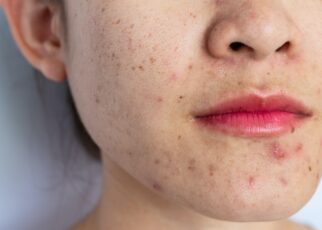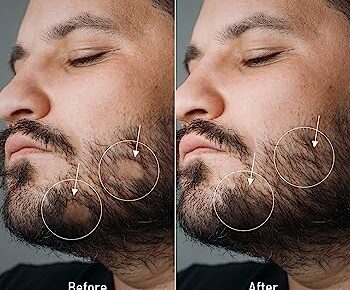Retinol Purge – Retinol, renowned for its effectiveness in treating various skin conditions like acne and signs of ageing, presents a challenge: it often exacerbates the issues before improving. If you’ve ever embarked on a new retinoid treatment, you’re likely familiar with what beauty experts affectionately term the “retinol uglies” or skin purging.
Retinol purge, characterized by the emergence of new pimples and flaky skin, is a typical side effect when initiating a retinoid regimen. Although it can be frustrating, it’s essential to understand the process. Dermatologists offer insights into this phenomenon and guide navigating it without abandoning retinol altogether.
What Is Retinol Purge Meaning?
Retinol’s main claim to fame lies in its ability to stimulate cell turnover, resulting in fresh, healthy skin cells replacing old, lifeless ones. However, during this process, it also brings various substances concealed beneath your skin to the surface, potentially leading to unexpected breakouts. Dermatologist Michele J. Farber, MD, from Schweiger Dermatology Group, explains that skin purging occurs when new ingredients, such as retinol, accelerate cell turnover, leading to blockages and exacerbating breakouts. This is especially evident as previously trapped oil and debris from deeper layers rise to the surface.
To illustrate, suppose you initially had only a couple of pimples when you began using your retinoid. With consistent and continued use, pimples may temporarily increase before eventually diminishing. Board-certified dermatologist Morgan Rabach, MD, explains that the retinol itself doesn’t cause more breakouts but rather brings hidden pimples brewing beneath the surface to the forefront all at once.
Skin purging can affect all skin types, but its appearance may vary depending on where you fall on the dry-oily spectrum. Dr Farber states, “Skin at either end of the spectrum, whether dry or oily, is more prone to purging. Dry skin is more susceptible to irritation, while oily skin may have more clogged pores that need clearing with new products.”
While retinol often takes the blame for causing skin purging, it’s not the sole culprit. Dr Farber explains that any ingredient that promotes cell turnover can trigger purging, including exfoliating acids like alpha-hydroxy acids (AHAs) and beta-hydroxy acids (BHAs). Common examples of these acids are glycolic, lactic, and salicylic acids, often found in acne treatments. To determine the source of your purging, it’s essential to introduce only one of these active ingredients into your skincare routine at a time.
How To Deal With Retinol Skin Purge?
Don’t Stop Using Retinol Entirely
If you encounter an unfavourable reaction to your retinoid, your initial instinct might be to stop using it. However, dermatologist Hartman advises against doing so. Discontinuing use will halt the progress you’ve achieved thus far, and taking a complete break would require going through the retinization process again. It’s important to remember that retinol purging is a temporary side effect, so if possible, it’s recommended to continue using your retinol as instructed.
Although retinoid purging is considered normal for all skin types, it’s crucial to differentiate between a purge and an adverse reaction, according to Lancer. If you experience severe redness, excessive peeling, or a burning sensation, it’s advisable to consult with your dermatologist and immediately stop applying the product.
Change Your Routine
Retinoids are regarded as the pinnacle of skincare and can deliver remarkable benefits almost single-handedly. Considering this is streamlining your skincare routine when introducing a new retinoid. She recommends using a mild cleanser, a topical retinoid, and a moisturizer. Specifically, she suggests seeking a moisturizer infused with MLE (Multi-Lamellar Emulsion) technology, such as Atopalm or Zerafite, as it can swiftly restore the proper function of the skin’s protective barrier, promoting overall skin health.
Use It Alternatively
Although it is recommended to continue using retinol, Hartman acknowledges that you might need to modify the frequency to allow your skin some respite. He suggests reducing daily usage and switching to two or three times a week to give your skin additional time to adapt. Once you can comfortably handle this reduced frequency, gradually increase it to four or five times weekly. This progressive approach allows your skin to acclimate to retinol while minimizing the likelihood of irritation or adverse reactions.
Follow Less Is More Rule
Lancer points out a common mistake people make by applying excessive clinical-grade treatments, believing that more is better. However, he emphasizes that overusing almost any clinical-grade anti-ageing treatment can be detrimental.
He warns that excessive use of such products can strip the skin, leading to dryness, redness, flakiness, and irritation. Instead, he advises applying only a small amount, mainly when introducing a new ingredient to your skin. This cautious approach helps to prevent potential damage and allows your skin to adjust gradually to the treatment.
Dilute Your Retinoid
If you have sensitive skin and are hesitant about using retinol, Lancer suggests a simple solution: diluting your product. He recommends mixing your retinol with your moisturizer before applying it if you have susceptible skin. This dilution method can help to mitigate potential irritation and allow your skin to acclimate to the retinol gradually.
Apply Moisturizer First
If you prefer not to mix your products, Lancer suggests an alternative approach. You can create a lightweight yet protective barrier by applying moisturizer before the retinoid. This method helps prevent potential irritation caused by the retinol while allowing it to work its magic in reducing acne and providing anti-ageing benefits. By applying the moisturizer first, you can strike a balance between protecting your skin and maximizing the effectiveness of the retinoid.
Avoid Exfoliating Actives
Regarding salicylic acid, Hartman advises reducing skincare serums and spot treatments containing exfoliating active ingredients like AHAs and BHAs. He explains that these products might be too harsh for the newly surfaced skin during the retinol purge phase. Cutting back on them can help avoid potential irritation and ensure that your skin adjusts comfortably to the retinol treatment.
Always Use Sunscreen
Retinoids increase the skin’s vulnerability to UV damage. Lancer explains that since retinol and retinoids accelerate the life cycle of skin cells, they also make the skin more sensitive to the sun’s rays. Therefore, applying sunscreen with a minimum SPF of 30 or higher after moisturizing during the daytime is crucial. Additionally, Lancer advises reapplying sunscreen every two hours to ensure ongoing protection from harmful UV radiation.
Conclusion
Don’t allow the fear of a retinol purge to hinder you from reaping the benefits of this exceptional ingredient. According to Hartman, everyone should incorporate retinol into their skincare routine except for individuals with rosacea or susceptible skin. These vitamin A derivatives have undergone extensive research and are widely acknowledged in skincare. Their extensive and unmatched advantages make them arguably the most crucial step for overall skin health and anti-ageing, second only to sun protection. Retinols effectively regulate cell turnover, facilitate exfoliation, prevent acne, even out discolouration, control oil production, smooth fine lines and wrinkles, unclog pores, and offer numerous other benefits.
In summary, if you haven’t included retinol in your skincare regimen yet, it is highly recommended to add one without delay.




